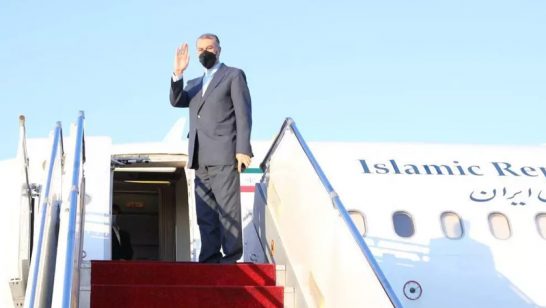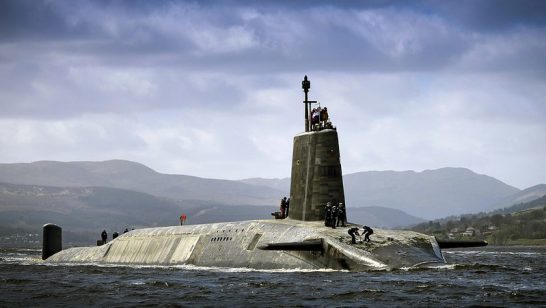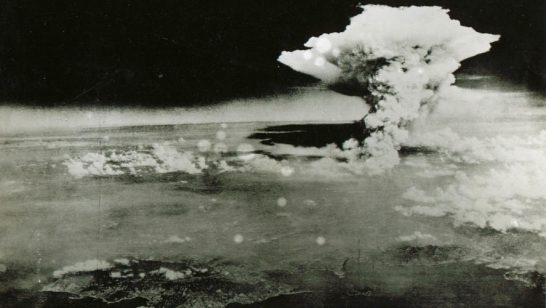
In September 2021, the Australian, the United Kingdom and the United States governments issued a joint statement announcing the creation of a new trilateral security partnership known as AUKUS. The pact ignited the international security community and, over the past five months, has generated a broad debate over the possible non-proliferation implications attached to it. While assessments have been mixed and often conflicting, they have brought to the fore some weak aspects of the non-proliferation regime.
Under the first initiative of AUKUS, the US will provide a nuclear-powered submarine fleet to Australia. When it does, Australia might become the first non-nuclear-weapon state to operate nuclear-powered submarines, therefore exercising a well-known – but so far dormant – loophole that allows fissile material to be removed from the International Atomic Energy Agency (IAEA) monitoring and verifications framework so long as it falls into the non-proscribed military activity category, namely, for certain non-explosive military uses. In other words, it would create a gap in monitoring, which would require the IAEA to make specific arrangements to ensure Australia’s continued compliance with its Nuclear Non-Proliferation Treaty (NPT) safeguards agreement (INFCIRC/217). This point has brought up particular criticism as it would set a significant precedent, potentially incentivising would-be proliferators to use naval reactor programmes to shield highly enriched uranium production from the IAEA monitoring system.
Inevitably, the discourse about would-be proliferators has focused on Iran, regarded as a high-risk case of spill-over. Many outlets have pointed out the increased potential for Iran to capitalise on this precedent by renewing its interest in nuclear-powered submarines and using it to evade the IAEA safeguards on its uranium enrichment activities. But the collateral effects of the AUKUS announcement shouldn’t be limited to simplistic assumptions about most probable proliferation cases, as this fails to offer a comprehensive assessment of the implications of the deal.
Considering first the domestic motivations, a closer look at the Iranian interest in nuclear naval propulsion over time might inform us of the strong entwinement between the latter and the diplomatic path of the Joint Comprehensive Plan of Action (JCPOA). Iran started to suggest that it might consider nuclear propulsion for its submarines back in June 2012, a few days before a new round of nuclear talks with the P5+1 (United States, China, United Kingdom, Russia, France, and Germany) and reiterated its ambition from time to time alongside subsequent stages of the negotiations. Similarly, in December 2016, President Rouhani called for the Atomic Energy Organization of Iran to start planning “the design and construction of a nuclear propeller to be used in marine transportation.” Rouhani’s statement marked Iran’s first reaction to the US Congressional legislation to extend the Iran Sanctions Act, a measure denounced by Iran as a “gross violation” of the JCPOA. Over the years, Iran’s announcements have been interpreted by nuclear experts as diplomatic talking points possibly aimed at strengthening its bargaining position vis à vis the P5+1.
Today, when JCPOA negotiations are at a critical juncture, AUKUS might provide Iran with an additional argument to expose the nonproliferation regime’s double standards and minimise the international criticism surrounding its own nuclear programme. Speaking at the 65th regular session of the IAEA, a week after the AUKUS announcement, Kazem Gharibabadi, Iran’s Permanent Representative to the IAEA, lashed out at the US and the UK “for falsely accusing Iran of pursuing non-civilian nuclear technology while inking a deal on building submarines fuelled with weapons-grade uranium to another country.” Similarly, Javad Zarif, former Foreign Minister of Iran, called the deal “an irony of historical proportions.”
This type of accusation is not new and draws on what Hugh Gusterson, among others, have called entrenched Nuclear Orientalism. Drawing from Edward Said’s definition of orientalism as “an imaginative geography dividing the word into two unequal parts, the larger and different one called the Orient, the other, also known as our world, called the Occident or the West”, nuclear orientalism describes a stigmatised and stereotyped perception – and treatment – of different actors within the nuclear system. This increasingly legitimised discourse defines nuclear proliferation as binary opposition: nations that can be trusted with nuclear weapons and nations that cannot. Iran, along with India, Pakistan, and Iraq, have been denouncing the double standard within the non-proliferation regime for decades, pointing at other non-nuclear weapons states – such as Japan, Germany, and the Netherlands – whose enrichment programmes appear more acceptable for non-proliferation norms, and less threatening to the international community. Inviting Australia to exploit the naval propulsion loophole while punishing other countries for pursuing enrichment programmes inevitably exacerbates this double standard and may lead to unintended consequences.
First, there is an inverse relationship between the credibility and robustness of the enforcement process and the entrenchment of the double standard. If Iran was now, after AUKUS, to exploit this precedent and remove nuclear material from safeguards, the international response might be less stringent and far more reluctant to exacerbate the double standard further. For its part, the IAEA will find itself in a credibility dilemma. If on the one hand, it is struggling to prevent the Islamic Republic from acquiring enough fissile material to build a nuclear weapon (25 kilograms of highly enriched uranium (HEU)), on the other hand, it will have to figure out how to ensure that 1600 to 2000 kilograms of unmonitored 97.3% HEU – the amount needed to operate six to twelve nuclear submarines for about 30 years – does not raise risks of nuclear weapon proliferation.
A second relevant – yet overlooked – aspect concerns the intersection between the legal requirements of the JCPOA and nuclear activities that involve nuclear propulsion. Like other non-nuclear weapons states that are signatories to the NPT, Iran has a comprehensive safeguards agreement with the IAEA, which follows from the IAEA Information Circular 153. In addition to the non-application of safeguards to nuclear material for naval reactors, paragraph 14 states that if a country has conflicting obligations on nuclear material, any nuclear material defined as being for exclusively peaceful use cannot be used for any military purpose, including nuclear propulsion. This is where the JCPOA comes into play. The Iran Deal was expressly designed to “ensure that Iran’s nuclear programme will be exclusively peaceful.” As long as Iran keeps adhering to the JCPOA, none of its nuclear material may be used for naval propulsion, precisely because it would violate the JCPOA provisions.
By contrast, if the JCPOA is not being adhered to, Iran would not be subject to its peaceful-use exclusion, thus remaining subject only to the NPT provisions, like all the other non-nuclear weapons states. This would mean that, were Iran to invoke paragraph 14 to withdraw nuclear material from safeguards, it would require the IAEA Board of Governors “to take appropriate action” and evaluate the case, just as the Australian one.
At this point, what the international response – mainly China and Russia, the main denouncers of the submarine deal – would be is a big question mark. On October 29th, the Permanent Mission of China to the IAEA requested the Secretariat to circulate a Note Verbale to all member states in which it addressed the AUKUS deal expressing “deep concern with and strong opposition to such a cooperation” and proposing the establishment of a Special Committee open to all IAEA members “to deliberate on the political, legal and technical issues related to the safeguards on naval nuclear propulsion reactors.” On the eve of the seventh round of JCPOA talks, the Chinese and Russian Permanent Representatives in Vienna declared they had coordinated their positions on AUKUS and on the resumption of talks on the JCPOA. On the same day, in an interview, Ambassador Wang Qun defined the deal as “a classic case and point of a double standard,” drawing a link between the 3.7% enrichment limit required by the JCPOA and the 90% highly-enriched nuclear-weapons material transferred to Australia. Similarly, a Russian Federation’s unofficial document forwarded to the International Organizations in Vienna and containing the Russian position on AUKUS reiterated the “destabilizing effect on the NPT regime.”
AUKUS will probably not be the ultimate trigger for Iran to rush and use naval reactor programmes as a cover to acquire nuclear weapons. On the contrary, the significant progress made by the Vienna negotiations and Iran’s interest in reviving the JCPOA suggests that this is not the path Iran is wanting to follow at the moment. However, measuring the impact of AUKUS simply by whether other would-be proliferators exploit the precedent is not a sufficient metric. It ignores the question of how non-nuclear weapons states re-assess the credibility of international enforcement actions, the incentives to cooperate and reduce proliferation risks, and more generally, the costs and benefits of complying with an increasingly two-tiered non-proliferation regime.
The opinions articulated above represent the views of the author(s) and do not necessarily reflect the position of the European Leadership Network or any of its members. The ELN’s aim is to encourage debates that will help develop Europe’s capacity to address the pressing foreign, defence, and security policy challenges of our time.



